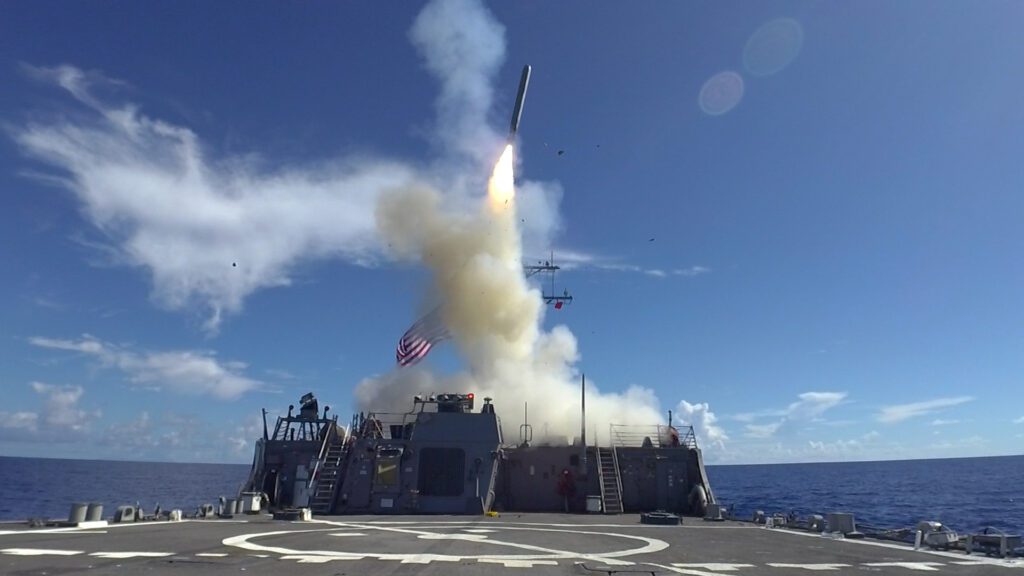
ARLINGTON, Va. — The AUKUS agreement between Australia, the United Kingdom and the United States announced last month highlighted the plan to add nuclear-powered attack submarines to the Royal Australian Navy (RAN), but the agreement also will add long-range precision-strike capability to the RAN in the form of Tomahawk cruise missiles to arm destroyers and also long-range precision missiles to the Royal Australian Air Force (RAAF) and to ground forces.
“Throughout the decade, Australia will rapidly acquire long-range strike capabilities to enhance the ADF’s ability to deliver strike effects across our air, land and maritime domains,” the Australian Department of Defence said in a release. The management of this transition, and other capability acquisition options that will meet Australia’s strategic requirements, will be at the forefront of consultations through AUKUS over the next 18 months.”
RGM-109 Tomahawk cruise missiles will arm the RAN’s three Hobart-class destroyers to enable the ships to strike land targets. The Tomahawks will be housed in Mk41 Vertical Launch System cells. The Tomahawk is built by Raytheon Missiles and Defense.
The AGM-158B Joint Air-to-Surface Standoff Missiles (Extended Range) (JASSM-ER) will arm the RAAF’s F/A-18F Super Hornet strike fighters and, in the future, F-35A Lightning II strike fighters, to strike targets at ranges up to 900 kilometers.
Also, the AGM-158C Long-Range Anti-Ship Missiles (Extended Range) (LRASM) will arm the F/A-18Fs Both the JASSM-ER and the LRASM are built by Lockheed Martin.
Australia also will arm its land forces with unspecified precision-strike guided missiles “capable of destroying, neutralising and supressing diverse targets from over 400 [kilometers],” the release said.
The Department of Defence also said it will be in “continuing collaboration with the United States to develop hypersonic missiles for our air capabilities.”
The Australian government also will be “accelerating $1 billion for a sovereign guided weapons manufacturing enterprise — which will enable us to create our own weapons on Australian soil.”
The nuclear-powered submarines for the RAN are a long-way off in time, so the government plans a life-of-type extension of Australia’s Collins class submarine fleet, which “will enhance Australia’s ability to deter and respond to potential security challenges.”
- Insitu Going Strong at 30, Focusing on Maritime Operations - April 8, 2024
- Navy Awards Boeing Additional Funds for MQ-25 Drones for Testing - April 3, 2024
- Benign 4th Fleet AOR Useful for Unmanned Vehicle Operationalization, Admiral Says - March 27, 2024






